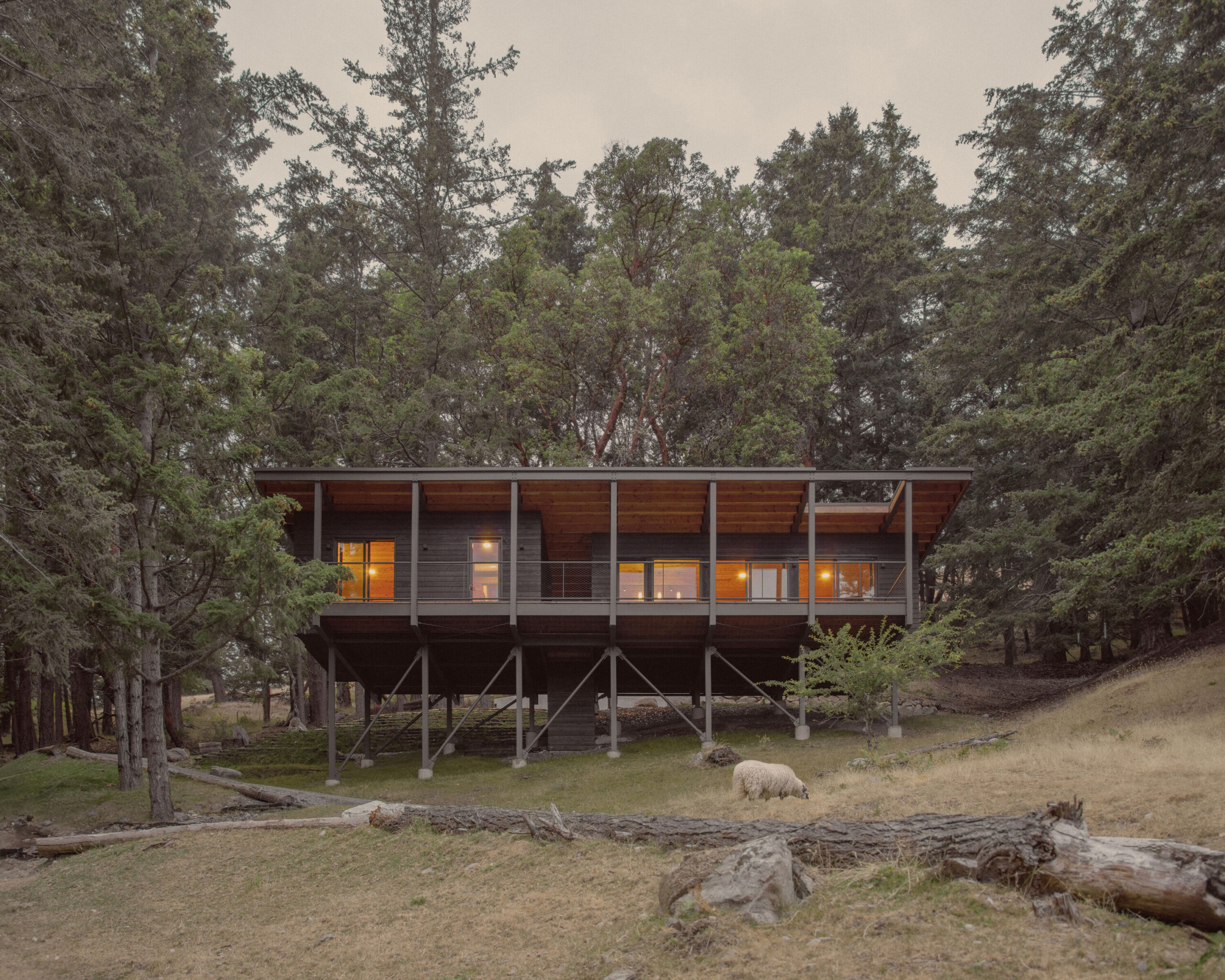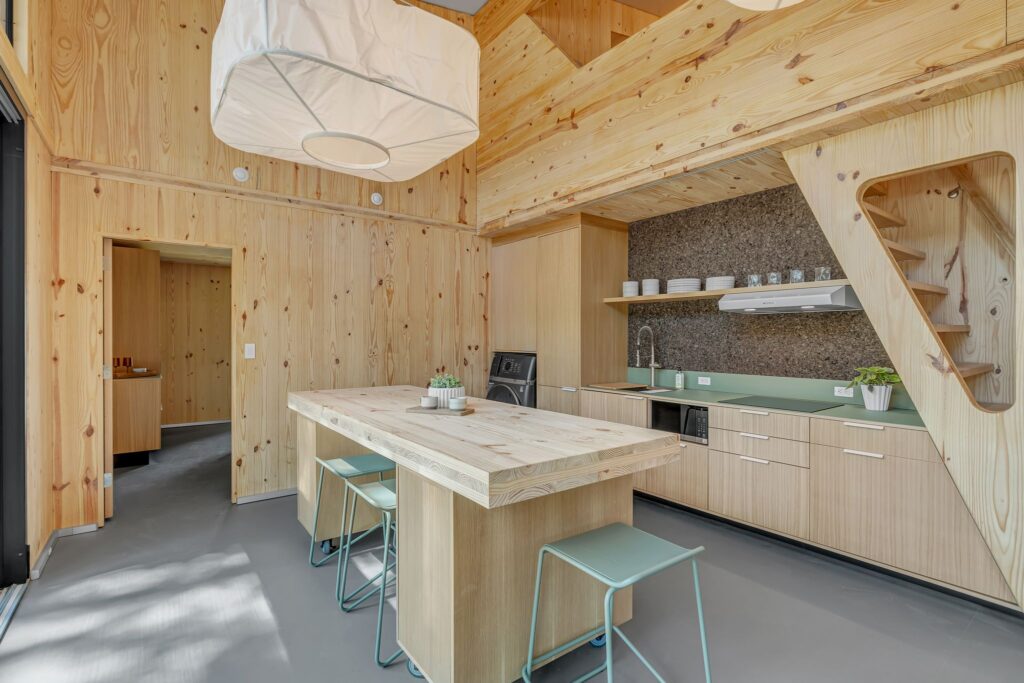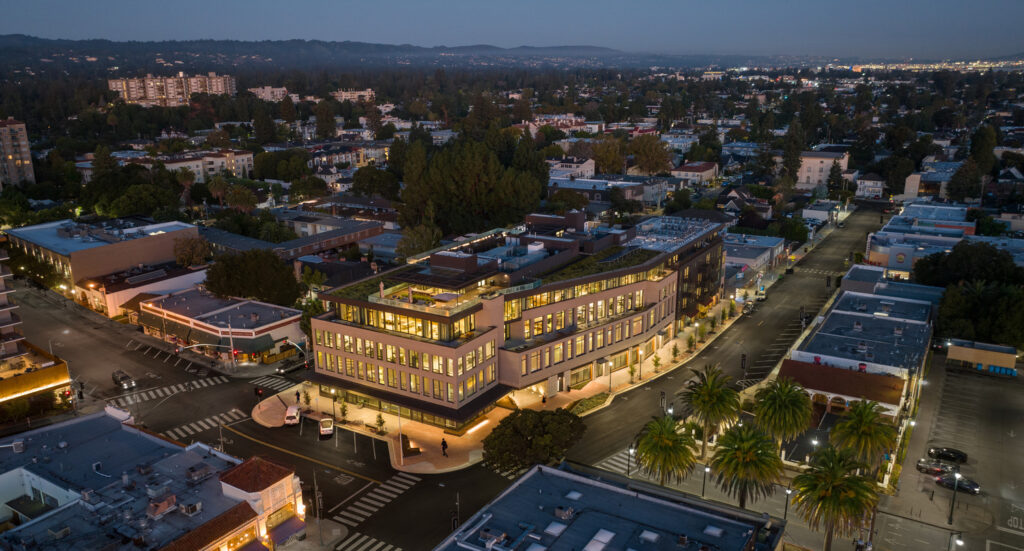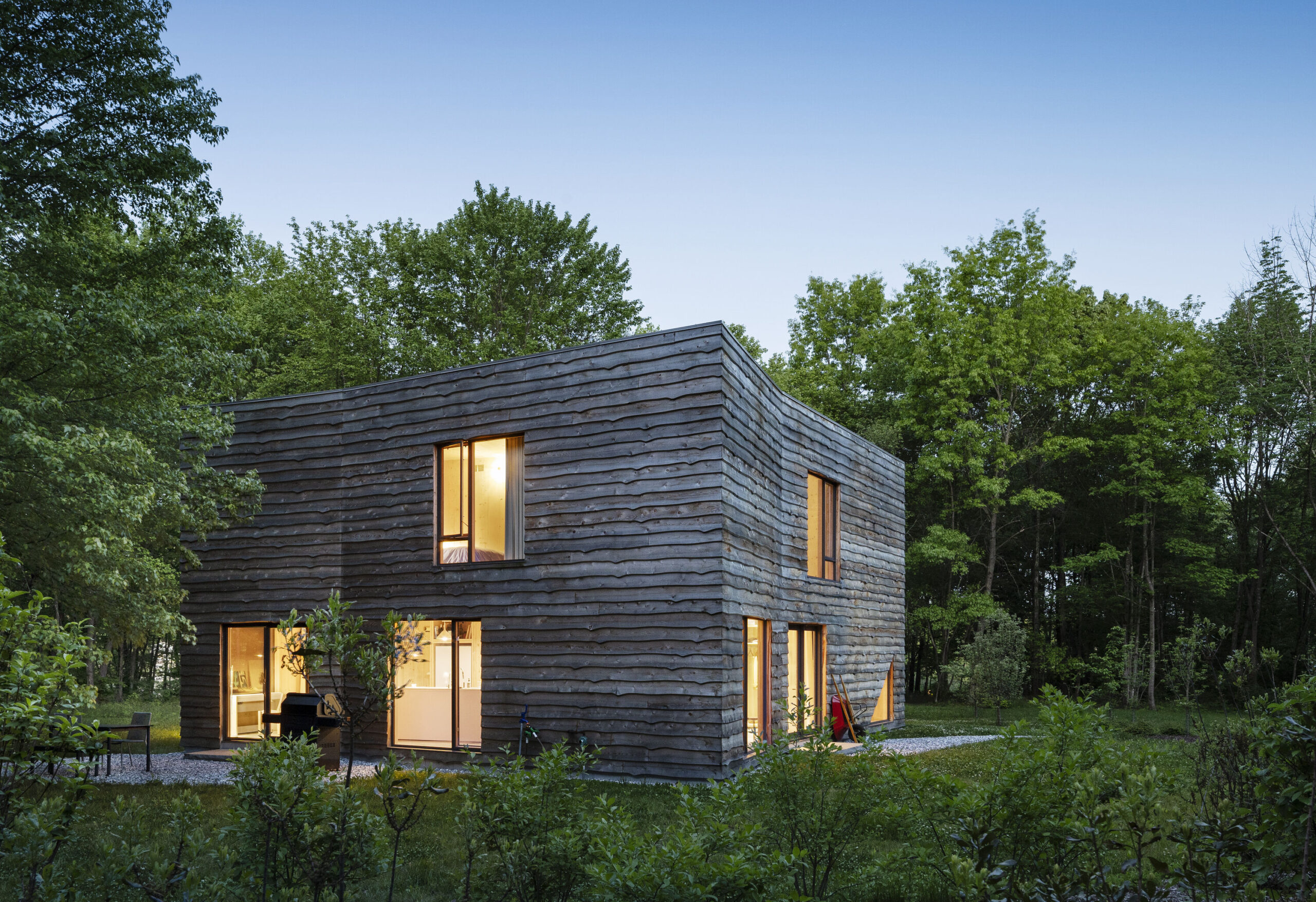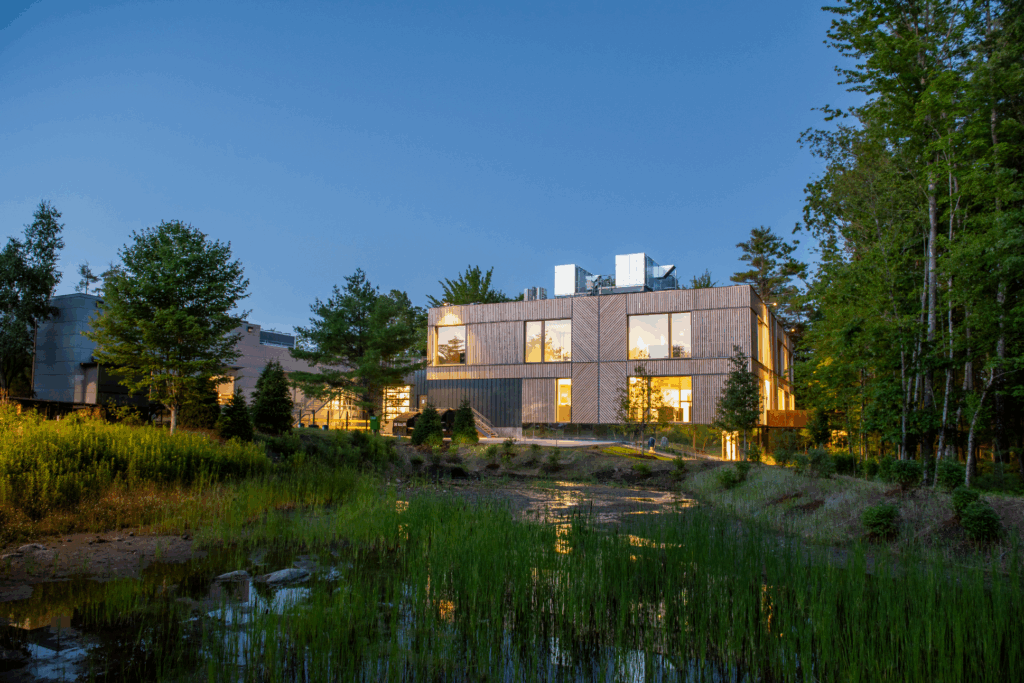Commercial, Light-Frame Construction, Single-Family Home
Johnsen Schmaling Reimagines the Wood Deck for Urban Outdoor Living
An extensive top-floor wood deck tops a new three-story mixed-use residential structure in Sacramento, California, designed by Wisconsin-based architects Johnsen Schmaling.
Dubbed the Flex House by the architects, the 3,000-square-foot, three-story-tall building accommodates the client’s young family of four in a duplex unit that occupies the second and third floors. A flexible unit on the ground level can be configured for commercial, office, or residential use as the family’s needs change.
Running almost the full length of the building, the third-floor deck creates an exterior space that expands and parallels the interior living spaces of the duplex unit within. Sweeping views of the neighborhood are framed by tall openings carved from a thick wall of vertical Alaskan yellow cedar siding.
“We use that species because it doesn’t have the reddish [hue] of more conventional cedar,” founding principal Sebastian Schmaling says. “It’s a slightly yellow tint and we whitewash it to reduce the color effect and get a more neutral color spectrum.”

Flex House

Flex House
The building’s structure is built predominantly of light-frame wood, supplemented by steel for long spans and moment connections. The wood façade, which wraps portions of the top two stories, is framed by 2×10 studs and furred with another row of 2x10s to create a wall that is over 20 inches deep. The openings in the wall are tall and slender to mimic the vertical siding and are chamfered to accentuate the depth of the assembly. “It uses wood, but the language is borrowed from the tectonics of masonry,” Schmaling says. “This looks almost like a fortress.”
The building’s site was an empty lot on the border between Sacramento’s historic Boulevard Park neighborhood and a more commercial district, and the face that the building presents to the world is influenced by these two competing contextual forces. The wood siding that indicates the family’s primary living spaces on the upper floors, including the upper-level deck, contrasts sharply with the black-oxide steel panels that clad the base and the service portion of the structure.
And the building’s flex concept has already passed its first test. The client is a local developer who previously worked with Johnsen Schmaling on several multifamily residential projects in the area. “The pandemic hit right when the building was finished, so she was able to use that flex unit on the ground floor for her own business,” Schmaling says. It’s now being rented as an apartment.

Flex House
Project Details
- Project Name:
- Location:
- Sacramento, CA
- Type:
- Architect:
- Timber Products:

